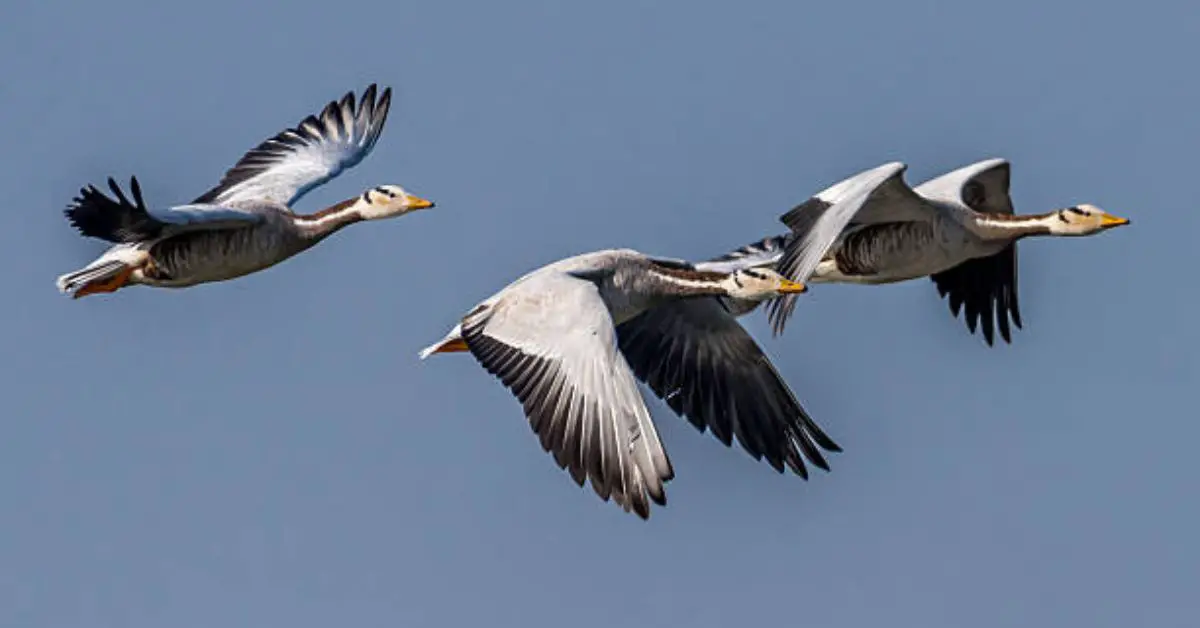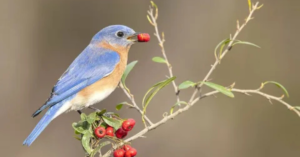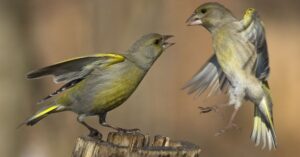Every autumn, as the days grow shorter and the air becomes crisp, millions of birds take to the skies in one of nature’s most awe-inspiring phenomena: bird migration. This remarkable journey, undertaken by species from all corners of the globe, is not merely a quest for warmer climates; it’s a complex dance dictated by instinct, environmental cues, and survival.
From tiny hummingbirds traveling thousands of miles to majestic eagles soaring high above mountain ranges, bird migration reveals an intricate web of behaviors and adaptations that have evolved over centuries.
But what drives these feathered travelers to embark on such perilous journeys? How do they navigate vast distances with astonishing precision? In this article, we will explain fascinating facts about bird migration that illuminate the challenges faced by these avian adventurers and highlight their incredible resilience.
When Do Birds Migrate?
Bird migration typically occurs in response to changing seasons. Most birds migrate during the spring and fall, with exact timings varying by species and geographic location. Some songbirds may begin their southward journey as early as late August, while others wait until November when temperatures drop significantly.
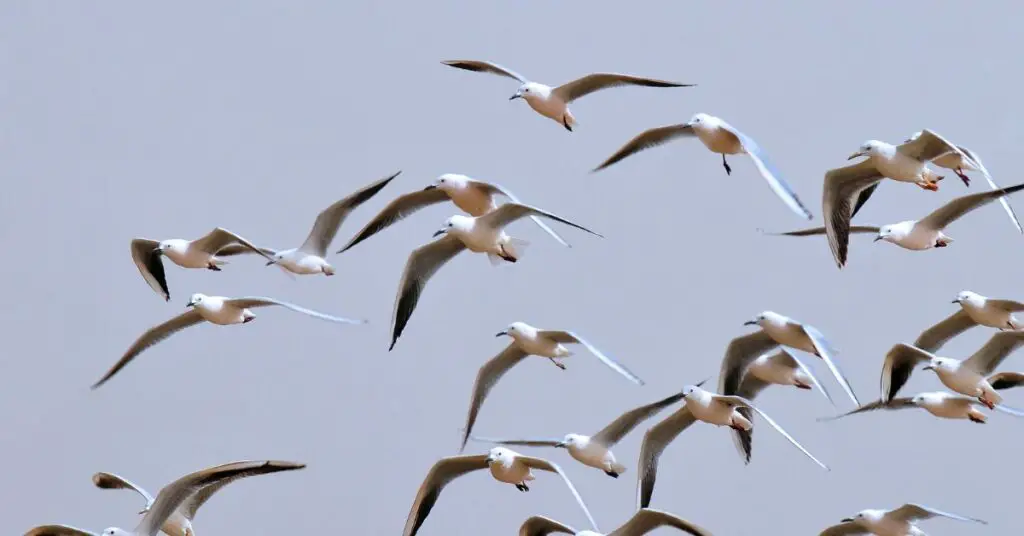
The need for favorable weather patterns and food availability informs these timing decisions; many birds instinctively know to seek warmer climates before winter sets in.
The duration of migration can greatly vary; some species undertake astonishingly long journeys spanning thousands of miles. For example, the Arctic Tern holds the record for one of the longest migrations—traveling over 44,000 miles annually between its breeding grounds in the Arctic and winter habitats in Antarctica.
The length of migration not only hinges on distance but also on environmental factors such as prevailing winds and food sources along their routes. Understanding these patterns enhances our appreciation for these remarkable creatures who navigate vast landscapes with precision year after year.
Birds Migration Season
Bird migration is a remarkable phenomenon that occurs as seasonal changes dictate the movement patterns of various avian species. Most birds migrate in response to temperature shifts and food availability, with two primary migrations taking place annually: spring and fall.
The bird migration season typically spans from late winter into early spring for birds heading north to breed, while autumn sees these same species returning south to avoid harsh winter climates.
But how long is migration? The distances traveled can vary significantly; some species might only cover a few hundred miles, while others, like the Arctic Tern, undertake epic journeys of over 44,000 miles round trip from their breeding grounds in the Arctic to wintering haunts in Antarctic waters.
This long-distance travel presents incredible energy challenges for migrating birds and highlights their extraordinary navigational skills. Each year, millions of avian travelers set out on this awe-inspiring journey, driven by instinct and environmental cues—a testament to nature’s intricate design.
Fall Migration Timing
As the days shorten and temperatures begin to drop, many species of birds start their incredible journey southward. This seasonal phenomenon, known as fall migration, sees numerous avian populations instinctively flocking to warmer climates.
Generally occurring between late August and early November, the timing can vary significantly based on geographical location and specific bird species. For instance, shorebirds in northern regions may begin their migrations earlier than songbirds who prefer deciduous forests.
Environmental cues play a crucial role in determining when birds migrate. Changes in daylight hours trigger hormonal shifts in birds that signal it’s time to prepare for departure. Factors such as food availability and weather patterns greatly influence migration schedules; an unseasonably warm autumn might delay some from heading south while pushing others to leave sooner for more predictable climates.
Observing these timely migrations not only captivates birdwatchers but also allows researchers to understand the broader impacts of climate change on migratory behaviors. Each autumn brings a stunning avian spectacle reminding us of nature’s remarkable adaptability and resilience amid changing conditions.
Migration Hotspots
When do birds migrate? Many species take flight during the late summer to early fall months as they head toward warmer climates. This timing aligns with the availability of food and favorable weather conditions; for example, raptors like hawks and eagles begin their journeys southward in September, seeking milder temperatures and abundant prey.
Among the many birds that participate in migration, sparrows are particularly noteworthy. Do sparrows migrate? Yes, several species do embark on migratory pathways. The White-throated Sparrow and the Fox Sparrow are known for their travels from northern breeding grounds in Canada to more temperate regions across the United States.
During this journey, migration hotspots emerge—areas rich in resources where birds can rest and refuel before continuing their trek. Coastal wetlands and river valleys often serve as critical stopover points teeming with food sources that sustain these weary travelers on their quest southward.
Do All Birds Migrate?
Migration in birds is a complex phenomenon that varies significantly across species, driven by factors such as climate, food availability, and breeding needs. While it’s commonly believed that many birds undertake long journeys to warmer climates during winter, this isn’t the case for all avian species.
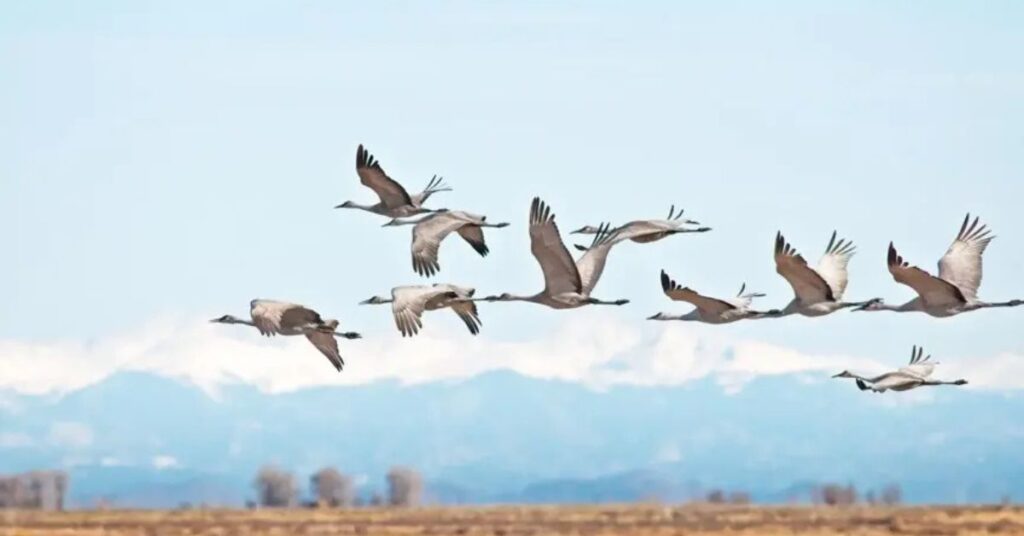
In fact, around 40% of bird species are non-migratory and have adapted to remain in their habitats year-round. These birds often utilize strategies like altering their feeding habits or seeking shelter to withstand seasonal changes.
The migratory behavior of some birds is not strictly seasonal but can be triggered by different environmental cues. Take the example of certain hummingbirds: they might migrate based on local flower blooms rather than fixed seasonal shifts. This opportunistic migration allows them to take advantage of abundant resources when available.
Some birds engage in short-distance migrations known as partial migratory behavior; these individuals might choose sedentary lifestyles influenced by individual personality types or social structure within flocks.
Quick Facts On Bird Migration By Species
Robin Migration
The American Robin, a familiar sight across North America, embarks on an impressive migration journey each year, traveling up to 3,000 miles. These birds typically migrate in flocks, and their movement is often triggered by the changing daylight hours and dwindling food sources as winter approaches.
Robins have a unique ability to adapt their migratory routes depending on environmental conditions; some may take detours based on weather patterns or availability of food along the way.
Remarkable fact about robin migration is that they are among the first songbirds to return in spring. Their early arrival allows them to stake claim to prime breeding territories before other species return.
During this period, robins not only sing melodically but also rely heavily on earthworms and berries—providing insight into their dietary preferences during migration.
Purple Martin Migration
The Purple Martin, North America’s largest swallow, showcases one of the most fascinating migratory patterns among birds. Each year, these aerial acrobats undertake a remarkable journey from their wintering grounds in Brazil to breeding territories across North America, often covering over 5,000 miles.
Where many other species that prefer to travel solo or in small groups, Purple Martins are unique in their social nature; they roost in large flocks during migration and even establish communal nesting sites. This sense of community not only enhances their safety but also facilitates the sharing of information about suitable feeding areas and breeding locations.
The timing of their migration is closely tied to environmental cues such as temperature and food availability. As they approach North America in spring, they rely on specific signals like blooming flowers and insect populations to determine when to arrive.
Urban areas have become increasingly important for Purple Martins due to human-provided housing options—they often seek out specially designed man-made houses that mimic natural nesting sites previously found in dead trees or cliffs.
Oriole Migration
Oriole migration is a fascinating phenomenon that showcases not only the birds’ endurance but also their remarkable navigation skills. These vibrant avian travelers, particularly the Baltimore and Orchard Orioles, journey thousands of miles from their breeding grounds in North America to their wintering habitats in Central America and Mexico.
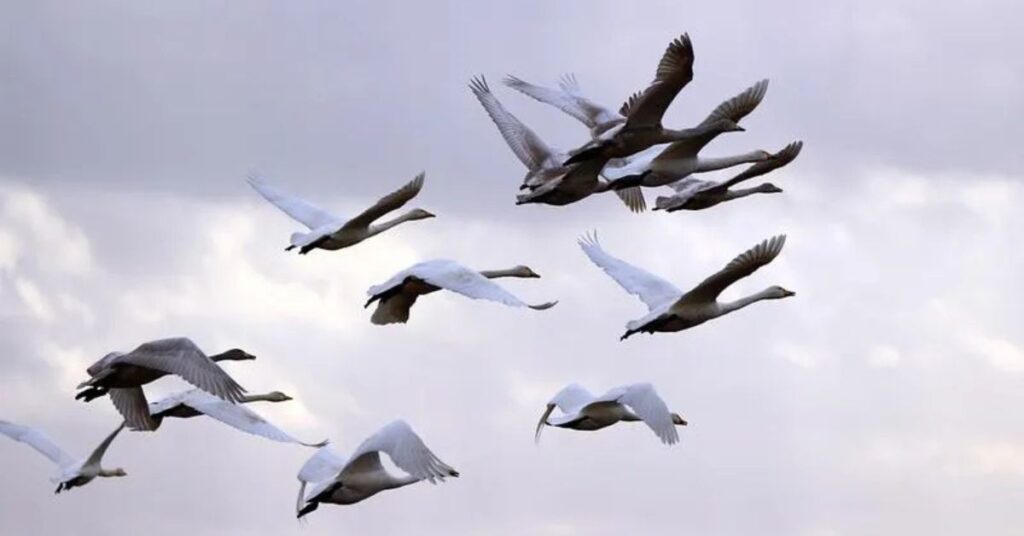
They utilize both instinctual compass-like cues and environmental markers such as the position of the sun and stars to guide them on their epic journeys.
As these birds travel southward, they seek out fruit-bearing trees and nectar-producing flowers for sustenance, showcasing an ability to shift their feeding habits based on availability. This adaptability not only ensures survival but also plays a crucial role in maintaining local ecosystems along migratory routes, as orioles help pollinate plants and disperse seeds through their feeding activities.
Bluebird Migration
Bluebirds, known for their vibrant plumage and melodious songs, exhibit fascinating migratory patterns influenced by seasonal changes. Eastern bluebirds typically migrate south from their breeding grounds in the northeastern U.S. to warmer areas in the southeastern states during the onset of winter.
Their migration is driven by food scarcity; these birds thrive on insects and berries that become less available as temperatures drop. Remarkably, they can often be seen in small flocks, which helps them navigate effectively through shifts in weather and territory.
Western bluebirds take a slightly different route, favoring a more localized migration within the western U.S. They tend to follow elevation cycles rather than strict geographical lines, retreating to lower altitudes where food sources remain abundant year-round.
What’s particularly intriguing is that many juvenile bluebirds may not migrate at all during their first year but instead establish territories close to their hatching sites. This variability underscores how environmental factors shape migratory behavior across species and regions—an intricate dance between instinct and adaptation that speaks volumes about nature’s resilience.
Goldfinch Migration
Goldfinches, renowned for their vibrant yellow plumage and cheerful songs, exhibit fascinating migration patterns that vary significantly among different species. The American Goldfinch (Spinus tristis), for example, is known for its unique migration strategy: it doesn’t migrate in large flocks like many other birds.
These colorful songbirds tend to move in smaller groups or even individually. This behavior allows them to adapt more flexibly to changing environmental conditions, ensuring a steady food supply as they travel from northern breeding grounds in the United States and Canada to wintering sites in the southern U.S. and Mexico.
Not all goldfinches migrate at the same time; some may choose to stay behind if food sources remain plentiful. Their feeding habits play a crucial role in determining their migratory decisions—American Goldfinches primarily consume seeds from plants like dandelions and thistles.
This preference for seed-based diets means that their movement often aligns with seasonal plant growth rather than a strict timetable dictated by temperature changes alone.
Red-Winged Blackbird Migration
Red-winged blackbirds (Agelaius phoeniceus) are among the most prolific migrators, showcasing remarkable adaptability as they traverse vast distances between breeding and wintering grounds. These adaptable birds migrate in flocks, leaving their northern habitats in late summer to seek warmer climates across the southern United States.
One interesting aspect of their migration is that females often leave earlier than males; this strategic timing allows them to reach prime territories for nesting once spring arrives.
What sets red-winged blackbirds apart is not just their migratory patterns but also their ability to thrive in diverse habitats. From wetlands to grasslands, these birds employ various foraging strategies tailored to their environment. Urbanization has influenced some populations to stay year-round in certain areas due to abundant food sources and suitable roosting sites.
As climate shifts continue shaping ecosystems, understanding the nuanced behaviors of red-winged blackbirds during migration may reveal significant insights into how avian species adapt and survive amid changing landscapes.
Mourning Dove Migration
Mourning doves (Zenaida macroura) exhibit a fascinating migration pattern that is often overlooked. These slender, gentle birds are known for their soft cooing calls and graceful flight, but what many don’t realize is that they undertake remarkable journeys each year.
Found throughout North America, mourning doves migrate south as winter approaches. Their migratory route can extend from southern Canada down to Mexico and parts of Central America, with some individuals traveling up to 1,200 miles in search of warmer climates.
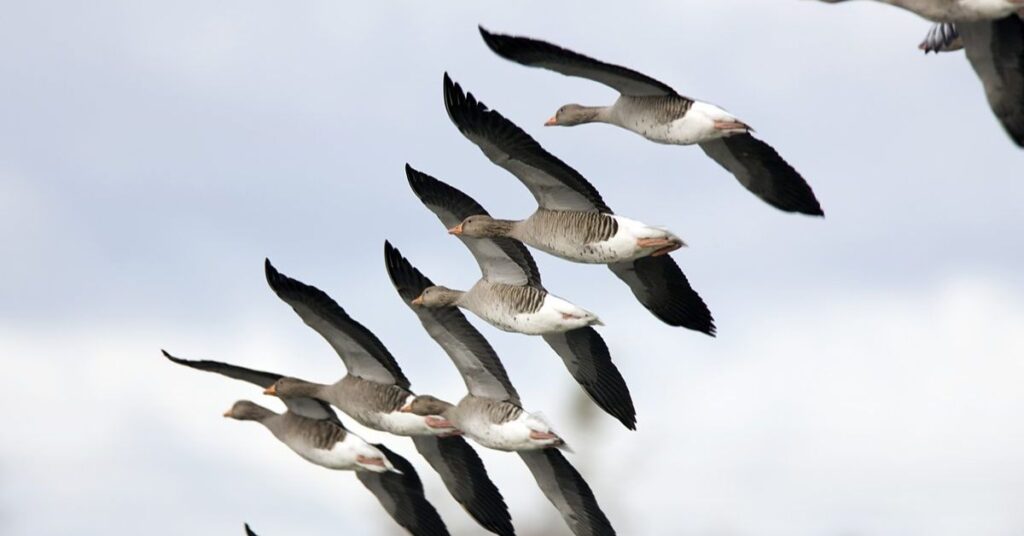
They thrive in diverse environments like urban areas, agricultural lands, and open woodlands. This flexibility not only allows them to find abundant food sources—primarily seeds—but also offers insights into how these birds respond to changing landscapes brought on by human activity.
Studies suggest that climate change may be influencing their migratory patterns; as temperatures rise and food availability shifts, mourning doves may alter their travel routes or timing in response.
If you enjoyed this post, you might also like another article on our site: “Hummingbird Migration Facts.”
Conclusion
Bird migration is a remarkable natural phenomenon that showcases the incredible adaptability and resilience of avian species. Each year, millions of birds embark on arduous journeys across vast distances, driven by instinct and the need for survival.
Understanding the patterns and challenges associated with migration not only enriches our appreciation of these creatures but also highlights the importance of conserving their habitats. As climate change and human activities continue to threaten migratory routes, it becomes increasingly crucial for individuals and communities to advocate for policies that protect these vital ecosystems.
FAQ’s
What Month Do Most Birds Migrate?
Most birds migrate in the spring and fall, with specific timing varying by species and geographic location. In North America, for instance, many songbirds begin their migration southward around late summer to early fall, typically from August through October.
Spring migration usually occurs from March to May when these birds return north to breed after wintering in warmer areas.
Where Do Most Birds Migrate To?
Most birds migrate to warmer regions during the winter months, where food is more abundant and conditions are less harsh. For many species, this means heading south from their breeding grounds in North America to destinations in Central America or even as far as South America.
What Is The Fastest Migratory Bird?
The fastest migratory bird is the common swift (Apus apus), known for its remarkable speed during flight. Research has shown that these birds can reach speeds of up to 69 miles per hour (111 kilometers per hour) when in level flight.
How Do Birds Know When To Migrate?
Changes in day length, or photoperiod, play a crucial role in triggering migration. As days get shorter in the fall, birds sense this change through specialized cells in their eyes that detect light.
This reduction in daylight signals the approach of winter and prompts hormonal changes that prepare them for migration.
Why Do Birds Migrate?
Birds migrate for two key reasons: the search for food and the need to breed. As seasons change, many habitats can become inhospitable due to temperature fluctuations or a decrease in food availability.
How Long Can Birds Fly?
The duration that birds can fly varies significantly among species and is influenced by factors such as body size, wing shape, and environmental conditions.
Smaller birds, like hummingbirds, may only be able to sustain flight for short bursts due to their high metabolism, while larger birds, such as albatrosses, are known for their impressive long-distance flying capabilities.
- How To Keep Bees Away From Hummingbird Feeders - March 20, 2025
- How To Attract Owls To Your Yard - March 11, 2025
- Breeding Season For Wild Birds - March 9, 2025
